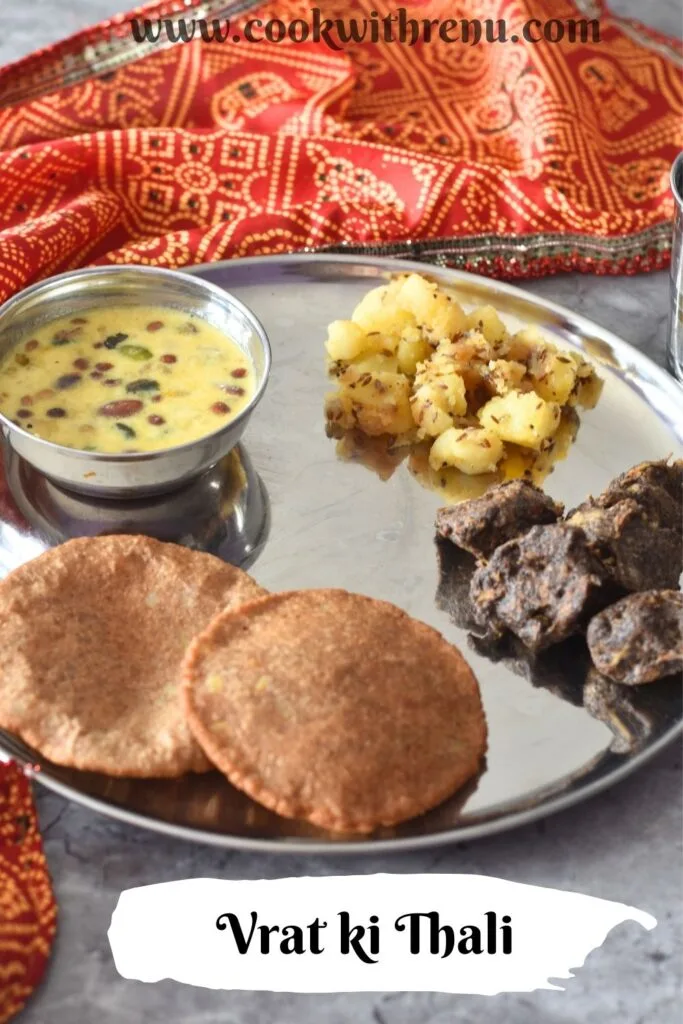In Indian culture, vrat (fasting) isn’t just a tradition, it’s a moment to pause and nourish both body and spirit. On these special days, families set out vrat ki thali, a platter filled with simple, wholesome dishes made with ingredients approved for fasting. Each dish supports a peaceful spirit and balanced energy, making sure you feel satisfied and supported through your fast.
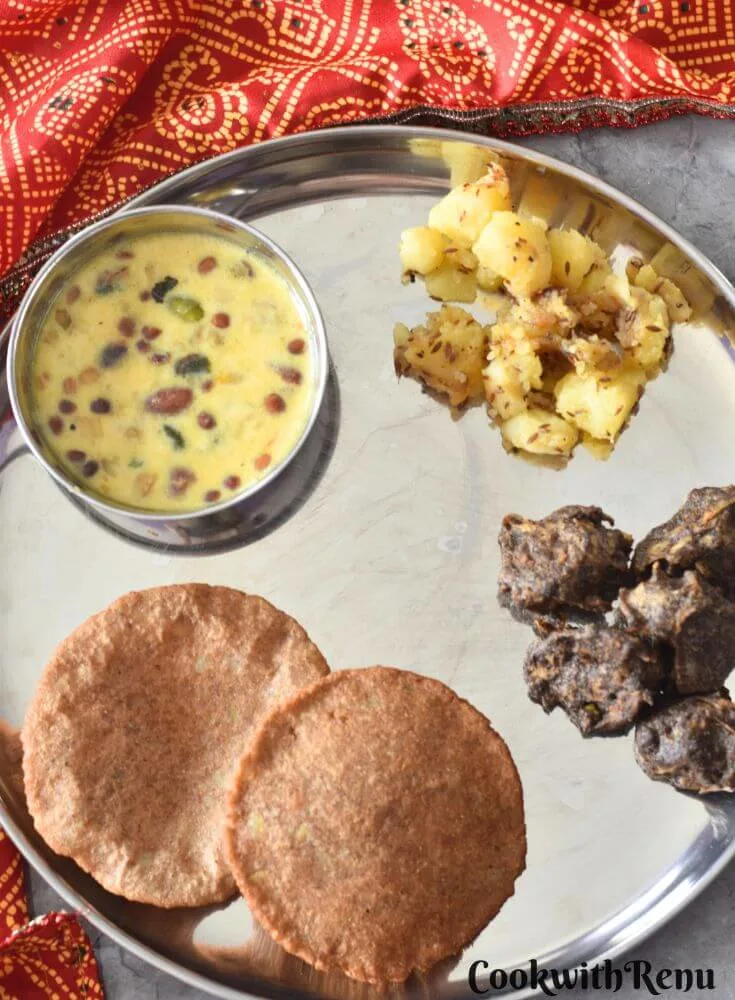
This thali brings together makhana kheer, aloo kali mirch, singhada ata puri, and kuttu ke pakode. Each dish is picked for its nutrition, flavor, and spiritual meaning. These foods keep you energized while staying true to tradition, so you don’t feel like you’re missing out—no matter how busy your day might be.
The Significance of Vrat Foods and Common Ingredients
Fasting isn’t just about skipping meals. In India, vrat meals have a special place in the kitchen and in the heart. Every ingredient is chosen with care, keeping spiritual traditions and personal well-being in mind. During vrat, people stick to a simple, pure diet, skipping everyday grains and spices in favor of foods that are easy on the body and mind. The idea is to nourish, not burden, while creating a sense of calm and devotion.
Why Special Ingredients Matter on Fasting Days
On vrat days, the focus shifts to what’s known as satvik or pure food. Satvik foods are light, easy to digest, and believed to keep thoughts peaceful. Common staples like wheat flour or rice are avoided, and spicy, strong flavors take a back seat. Instead, the vrat thali features select ingredients that follow tradition and nutrition.
Common vrat ingredients pack a punch:
- Makhana (fox nuts): Crunchy and full of energy, these seeds are a fasting favorite. High in protein and fiber, makhana helps keep you full without feeling heavy. When made into kheer, they turn creamy and satisfying.
- Singhada atta (water chestnut flour): Grain-free and naturally gluten-free, this flour is packed with potassium and minerals. It’s the secret behind soft, fluffy puris that don’t cause bloating.
- Kuttu (buckwheat): Another gluten-free flour, kuttu is rich in protein and easy to digest. It gives pakode a crisp bite without any grainy aftertaste.
- Potatoes: You’ll see aloo on almost every vrat menu. Potatoes stay within fasting rules and provide lasting energy, making them ideal in curries or snacks.
Ingredients Commonly Avoided During Fasting
Certain foods are always off the vrat menu. The idea is to keep meals light, clean, and free from tamasic (heavy or stimulating) foods.
Here’s what’s usually skipped:
- Regular wheat flour and rice: These grains are swapped out to rest the digestive system.
- Regular table salt: Vrat dishes use sendha namak (rock salt), which is considered pure.
- Grams, lentils, and legumes: Excluded for being too dense and often heavy.
- Regular spices: Whole and ground spices like turmeric, hing (asafoetida), or garam masala are avoided. Mild spices like cumin and black pepper are accepted.
The Satvik Approach to Cooking
Satvik cooking focuses on purity and natural flavors. During vrat, people aim for foods that are fresh, seasonal, and barely processed. No onions or garlic are used, as these are thought to cloud mental clarity. Instead, dishes lean on simple seasonings, allowing each ingredient to shine.
Some core ideas behind satvik vrat meals:
- Foods are always freshly cooked.
- Frying and roasting bring out natural taste without heavy spice.
- Only simple seasoning is used, just enough for taste.
How Vrat Thali Supports Energy and Balance
Fasting dishes aren’t just about tradition, they play a real role in supporting your body. By picking ingredients like makhana and kuttu, you get steady energy and no sugar spikes. Root vegetables give lasting fullness, so you don’t feel worn out. Every bite is meant to help you feel supported, both physically and mentally.
The vrat thali keeps you satisfied, clear-headed, and grounded. You enjoy food that’s clean, nourishing, and deeply tied to family and faith. Whether it’s a cozy bowl of makhana kheer or a crisp kuttu pakora, these meals make fasting days something to look forward to.
Traditional Vrat Ki Thali: A Delicious Balance
A traditional vrat ki thali isn’t just a platter of foods that meet fasting rules, it’s a real balance of taste, energy, and comfort. Each dish brings its own punch of flavor and texture, keeping the meal interesting and satisfying while following fasting traditions. From something creamy and sweet to warm, spicy, and crispy, there’s no dull bite on this plate. Here’s how each classic dish adds to the magic.
Makhana Kheer: Creamy Fasting Dessert
Makhana kheer is the soul of many vrat menus. Simple, rich, and light, this creamy pudding is made just with makhana (fox nuts), full-fat milk, sugar, and cardamom. Start by toasting makhana in a bit of ghee until crunchy. Next, simmer them in milk until the mixture thickens and the makhana gets soft. Add sugar and cardamom towards the end for gentle sweetness and aroma.
Why is it loved? Makhana is loaded with protein, minerals, and fiber, so your body gets healthy fuel. Unlike heavy desserts, makhana kheer leaves you satisfied without feeling stuffed. It’s gentle on the stomach, which is why people reach for it during fasting.
For the vrat thali, serve makhana kheer chilled or at room temperature. You can sprinkle sliced almonds, pistachios, or a pinch of saffron on top for extra color and crunch. It’s the perfect finish to the plate, but many enjoy a few spoonfuls alongside the savory dishes for a sweet contrast.
Key points:
- Naturally gluten-free and light
- Rich in protein and minerals
- Easy to digest and quick to make
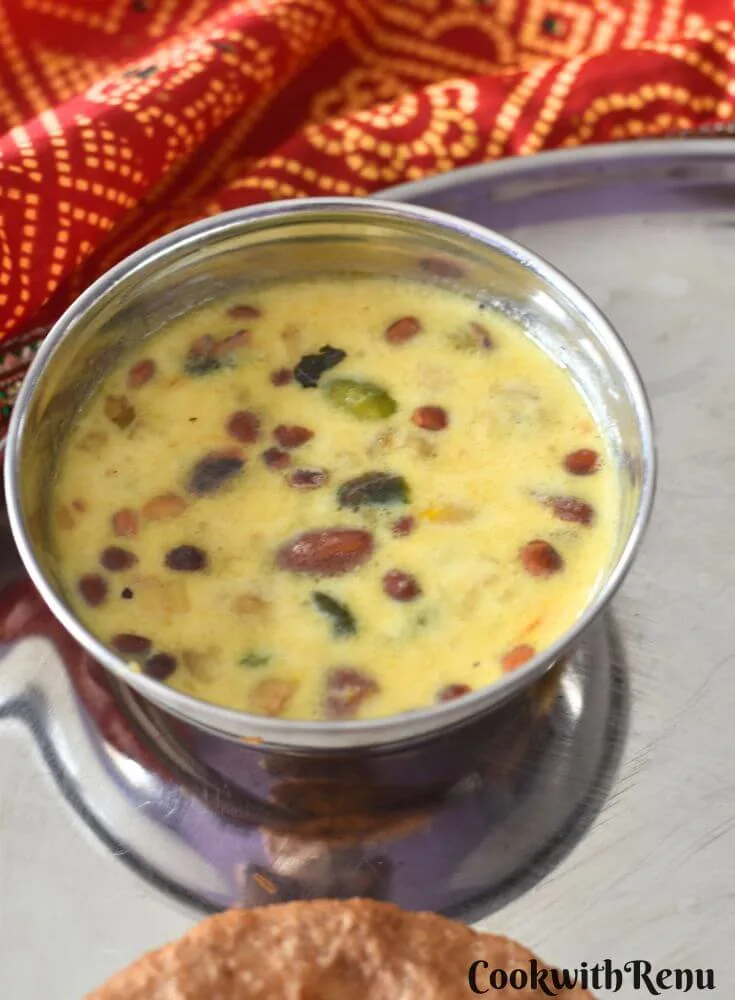
Aloo Kali Mirch: Potato and Black Pepper Sabzi
This humble yet bold dish is a staple for fasting. Potatoes act as the star, cooked with only fasting-approved spices. No onion, no garlic, just the basics: boiled potatoes, roasted cumin, a bit of ghee, sendha namak (rock salt), and a good hit of ground black pepper.
The black pepper does all the heavy lifting here. It adds a gentle kick and depth of flavor without making the dish spicy. Since potatoes are filling and packed with carbs, they give steady energy through the day. Toss boiled potato cubes in hot ghee with cumin, sprinkle in the rock salt, then crank up the black pepper for a lively taste. Finish with a squeeze of lemon and chopped cilantro for freshness.
Aloo kali mirch has a soft, buttery bite and peppery finish that stands out on the plate. It pairs well with any flatbread or fritter, adding substance to the thali without being heavy.
Highlights:
- Made with fasting-friendly seasonings
- Satisfying and filling
- Black pepper gives it warmth and flavor
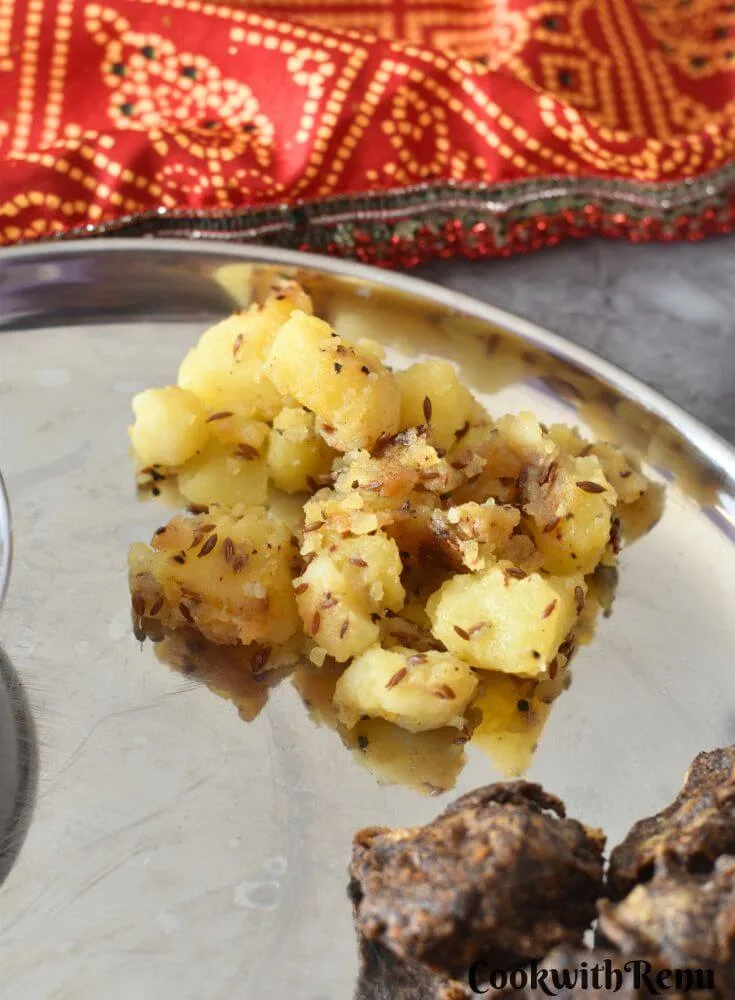
Singhada Ata Puri: Light and Gluten-Free Breads
Singhada atta (water chestnut flour) is a go-to during vrat because it’s gluten-free and easy on digestion. When made into puri (deep-fried bread), it results in soft, slightly nutty breads with crisp edges. To make singhada puris, knead the flour with boiled, mashed potato and sendha namak for softness. Roll small balls flat and fry in hot oil until they puff up and turn golden.
For the crispiest puris, be sure to use smooth dough and keep the oil hot. If you want extra flavor, mix in chopped green chilies or a touch of cumin. You can shape them round, oval, or even stuff small amounts of mashed, spiced potato inside for variation.
Why they stand out:
- Completely grain-free
- Stay puffy and light
- Great for scooping up sabzis or kheer
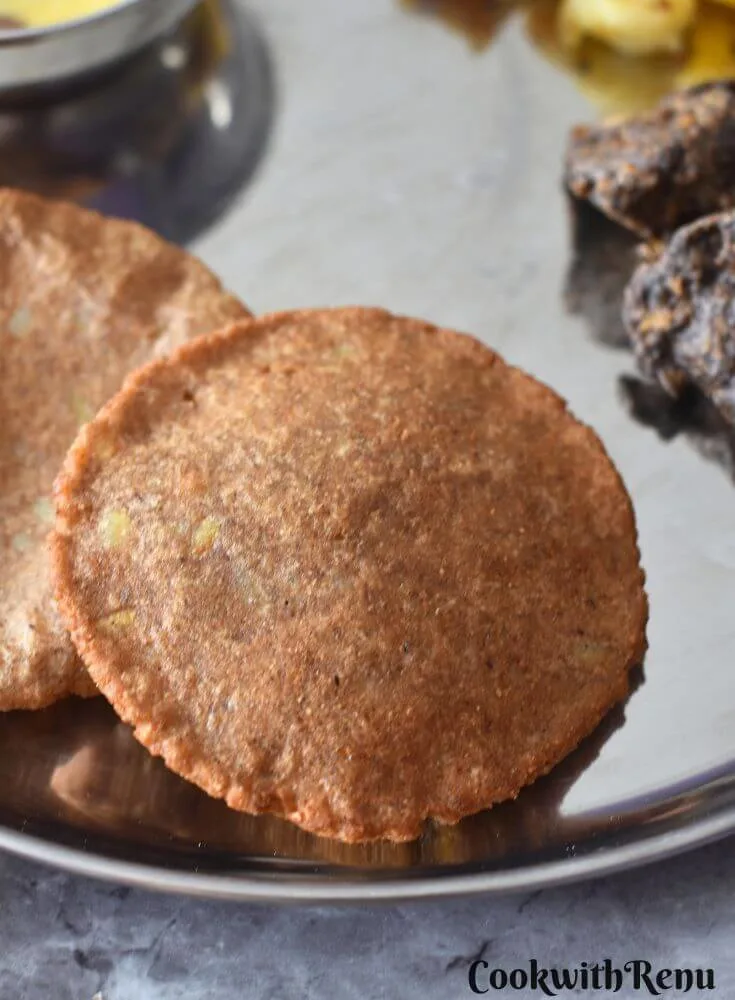
Kuttu Ke Pakode: Crispy Buckwheat Fritters
Kuttu or buckwheat flour is a fasting powerhouse. It’s packed with protein, fiber, and essential minerals. Kuttu ke pakode are crunchy fritters that bring real excitement to the thali. To make them, mix kuttu flour, raw potato, with sendha namak and a splash of water to create a thick batter. Fry until crisp.
The nutty taste of kuttu combined with the earthy filling makes these pakode addictive. They’re perfect for dipping into chutney or enjoying as-is.
To make kuttu ke pakode:
- Create a smooth, thick batter with kuttu flour, potato and water.
- Add a pinch of sendha namak and cumin for flavor.
- Deep-fry in hot oil until golden and crisp.
Popular vegetables for pakode include:
- Potato slices
- Paneer cubes
- Sweet potato
- Raw banana
With crunchy texture and hearty bite, kuttu ke pakode offer a satisfying twist on the classic fritter while keeping everything vrat-friendly.
Each dish adds something unique to the thali, so you get creaminess, spice, crunch, and comfort in one simple meal using only permitted fasting ingredients. This balance is what turns an ordinary fast into a comforting feast.
Tips for Preparing and Serving Vrat Ki Thali
Getting a vrat ki thali ready is more than just following recipes. A little planning, some kitchen tricks, and a mindful approach can turn your fasting meal into an experience you look forward to. Taste, freshness, and a clean layout on the plate all matter. Here are ideas to keep your vrat spread fresh, appealing, and completely within fasting rules without stressing yourself out.
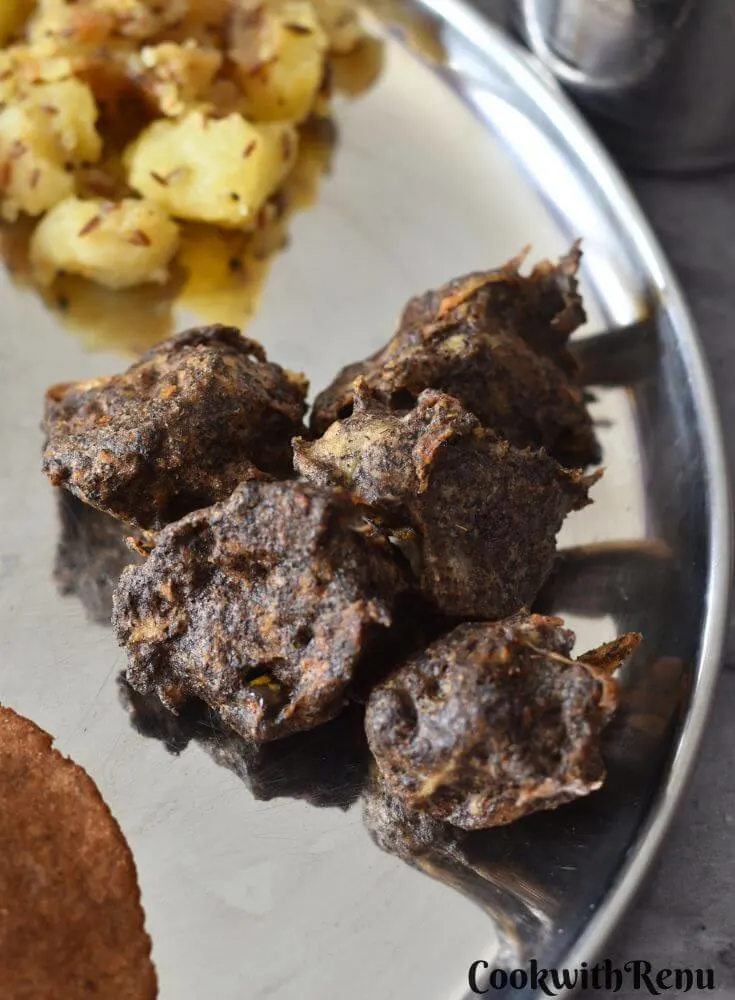
Prep Ahead for Quick and Stress-Free Cooking
Having ingredients and tools in place cuts down on cooking time and keeps you calm. A little work the night before can make your vrat morning much smoother.
Some handy prep ideas:
- Wash and peel potatoes, then store them in water in the fridge.
- Toast makhana (fox nuts) ahead. Keep them in an airtight jar, ready for kheer.
- Pre-mix singhada or kuttu flours with sendha namak and cumin to save a step.
- Chop green chilies, cilantro, and lemon wedges for quick garnishes.
With these basics ready, you’ll fly through your cooking on fasting day.
Keep Everything Fresh and Light
Freshness keeps the thali bright and tasty, especially since vrat food is simple. Use seasonal veggies, and always cook in small batches for the best flavor and texture.
- Make puris and pakode just before serving so they stay crisp.
- Aloo ki sabzi can be made ahead of time, or just right before plating.
- Chill makhana kheer in the fridge for a cool, creamy treat if you have time.
If you need to pack food for travel or a long day, keep every dish in separate containers. Use paper towels to remove extra oil from fried foods so things don’t get soggy.
Stick to Fasting Rules
Cooking for vrat is different than regular days, and small mistakes can make a dish ineligible for fasting. Before starting, double-check which ingredients are allowed for your family’s traditions.
Most vrat rules want:
- No regular salt—use sendha namak only.
- No grains, lentils, or regular spices. Use only cumin, black pepper, and select mild herbs.
- No onion or garlic in any dish.
- Only pure oils, like ghee or peanut oil, for cooking and frying.
Stick to these to keep every dish vrat-friendly.
Plating the Thali for Eye Appeal and Satisfaction
How you serve your vrat ki thali can boost both mood and appetite. A neat, well-arranged plate sets a positive tone and adds festive spirit.
Here’s one way to lay out your thali:
- Place puris or pakode side by side for easy grabbing.
- Scoop aloo sabzi in a separate bowl or on one side.
- Pour makhana kheer into a small katori or bowl.
Top off your plate with small bowls of fasting-friendly chutney—coconut, peanut, or coriander chutney (without onions or garlic). A dollop of fresh curd (yogurt) cools the palate and helps digestion.
Accompaniments for an Extra Touch
Vrat food can feel repetitive. Little extras keep it exciting:
- Serve cool curd sprinkled with roasted cumin, or this simple Dudhi Raita will work too.
- Offer a bright, fasting chutney (like mint, coconut, or peanut). Did you try this, simple, Farali Peanut, Sesame and Curd Chutney.
- Add a side of fresh fruit—banana, papaya, or apple slices.
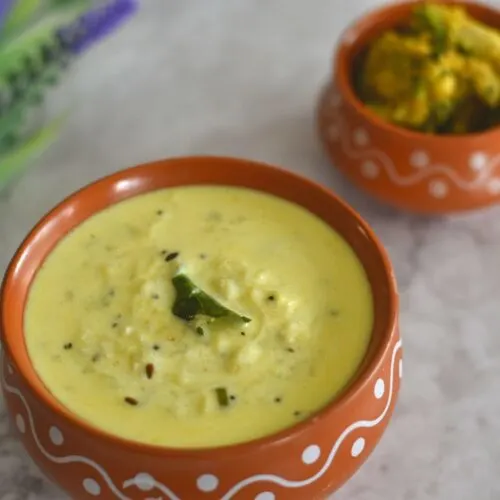
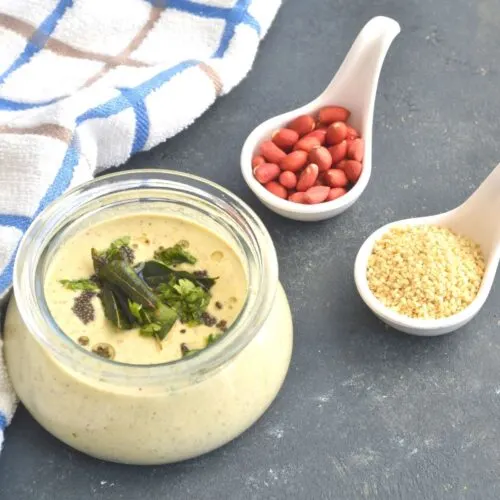
These sides bring balance, freshness, and nutrition to your meal.
Taking time to plan, prep, and plate pays off by making your fasting day smooth and pleasant. Your thali will look and taste inviting, even on a busy family morning.
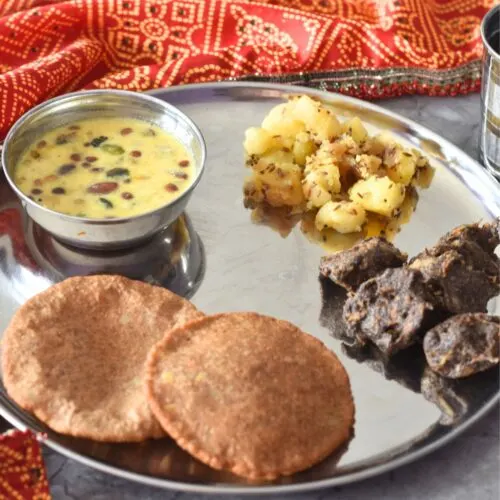
Easy Vrat Ki Thali (Fasting Platter) Makhana Kheer, Aloo Kali Mirch, Singhada Puri, and Kuttu Pakode
Instructions
Singhada Puri
- Boil 1 potato.
- Let Potato cool down, then mix it with 1 cup flour and salt.
- Make a dough. Water would not be required, if require add a teaspoon at a time.
- Pat it dry on a clean kitchen towel or a greased plastic.
- Fry in hot oil until cooked on both sides.
Kuttu Ke Pakode
- Mix 1/2 cup buckwheat flour and 1 medium size grated potato.
- Add 1 teaspoon green chilies, salt.
- If you eat fruit salt during fasting add a pinch.
- Mix and make a smooth thick batter using water.
- Drop a tablespoon at a time in hot oil.
- Fry it on a medium stove until cooked all over.
Tried this recipe? Please comment and rate the recipe. Share your pics and tag us.
Subscribe to my email list to get the new recipes straight into your mailbox.

